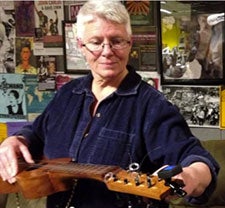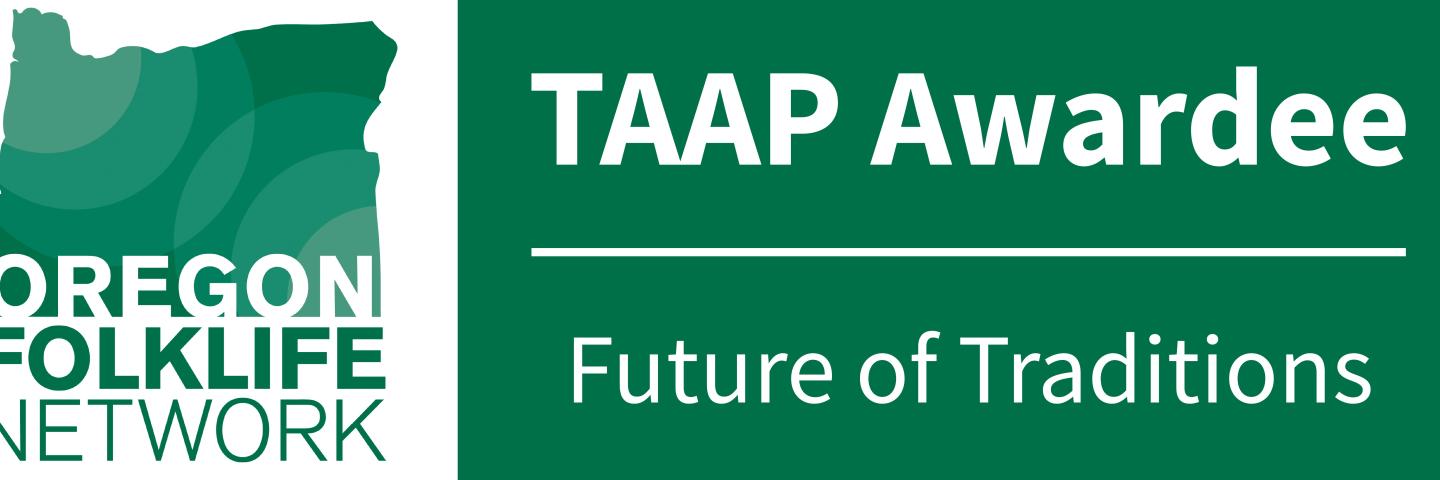 | Traditional skill/art/craft: Son Jarocho, Zapateado from Veracruz, Mexico Years Awarded: 2014 Contact Information: Phone: (541)912-2250 Email: jmpc53@hotmail.com |
ARTIST BIOGRAPHY
I was born in East Los Angeles and studied folkloric dance as a child. I studied ethnic dance formally at East Los Angeles Community College and San Francisco State University where I graduated with a degree in Human Movement Studies. It was during my college years that I began to learn the art of Mexican ballet folklorico. I studied with the most prestigious ballet folklorico company in the U.S., Los Lupenos de San Jose between 1977-1978 and became a principle dancer, touring member, and teacher between 1978-1982. In 1989 I met Gilberto Gutierrez in San Francisco and began studying traditional son jarocho for fandango with him. Gilberto is possibly the single most important person responsible for the resurgence of son jarocho. After studying with Gilberto for a couple of years, he suggested I move to Veracruz to study the art in its native context. I lived in San Andres Tuxtla, Veracruz from 1991-1999 where I studied with elderly campesino (peasant) musicians who are the ones responsible for passing down this music and dance for over four hundred years. I eventually became a teacher at the Casa de Cultura in San Andres and participated in groups such as Grupo San Martin, and played in everything from the community fiestas to stage performances in Tlcotalpan. Upon returning to the states, I settled in Eugene, OR and began the Taller de Son Jarocho de Eugene in 2011 and in Springfield in 2013 in order to build community among Oregon’s new immigrants.
APPRENTICE BIOGRAPHY - Angelita Chavez 2014
Angelita Chavez is a first-generation Mexican immigrant from Michoacán. She is committed and passionate about her culture and keeping her traditional forms of dancing alive, saying it is part of her identity. Before moving to Eugene, she was involved in a ballet folklorico dance troupe in Seattle called Bailadores de Bronce where she danced for ten years. In 2012 she met Janice Carraher when she attended her classes on Taller de Son Harocho where the was introduced to the traditional form of son jarocho and fandango. The traditional music style promotes community through music and Chavez feels this opens up new possibilities for creativity and self-expression. She had been learning from Janice for two years and doing an informal apprenticeship where she was taught the skills to help teach others to dance. Her goal is to teach beginning dance classes and then once she is proficient in Jarana, teach that as well to the community.
Q+A WITH THE MENTOR ARTIST
Describe your traditional art.
Body
Ballet folklorico is a commodification and commercialization of traditional forms of dance of the Mexican countryside. The tradition of son jarocho for fandango is the way that msuic/dance really happens in southern Veracruz. It is an ancestral art combining Spanish, African, and indigenous influences. It involves singing and playing instruments called jaranas and dancing zapateado on a tarima (wooden platform). The most important expression of this art is the fandango – a community musical/dance celebration that is participatory and allows men and women of all ages to participate in music making. While music is played and songs are sung, dancers take turns beating out the rhythms with their feet on the tarima. Fandangos in Veracruz can last all night or many days. It is the most important expression of community belonging in the region. Currently, this art is expanding worldwide and we were the first to hold fandangos in Oregon.
How did you come to learn this tradition?
Body
It was after giving up ballet folklorico that I began to study son jarocho. I first learned traditional son jarocho for fandango (both jarana and zapateado) from Gilberto Gutierrez between 1989 and 1991. Gilberto is the person responsible for the resurgence of this tradition in Veracruz and is the director of Mono Blanco, possibly the most important group. Upon his suggestion, I moved to San Andres Tuxtla, Veracruz to study with traditional musicians of the region. From 1991 to 1999 I studied with the following master musicians: Jose Palma Valentin (Cachurin), Pablo Campechano, Andres Vaga, Ignacio Hernandez, Daniel Hernandez Carmona, Marta Vega, and Arcadio Baxin. These are now some of the most famous musicians and dancers although I was there they were relatively unknown. While living in Veracruz, I performed regularly with Grupo San Maartin, played in weekly fandangos/encuentros, performed at the Encuentro de Jaraneros in Tlcotalpan, Veracruz with Grupo San Martin, and participated regularly in various community expressions of son jarocho: fandangos, velorios, procesiones, la Rama, encuentros de jaraneros, encuentros de decimistas, etc. I also taught adult dance at the Casa de Cultura, San Andres Tuxtla and formed the group Son de Mujer. To me, playing on stage was not as important as playing fandangos in towns and villages as part of the normal social life of regular people of the region. I learned much from watching and participating in the living tradition.
Why is this cultural tradition important to your community?
Body
Oregon has a large, burgeoning Latino population yet there are few organizations or cultural institutions to meet their needs. Latino immigrants in Eugene feel fairly isolated and segregated. Besides churches and a few service organizations there is no cultural institution that seeks to promote the language, culture, music, and dance of Mexico. New generations of Americans are growing up with little connection to their home countries and with few resources to feel pride in their culture and heritage. We envision the fandango as a space where people can come together and express themselves through music, dance, and song and connect with their culture of origins. At the same time, the fandango is a space to share Mexican culture with other people whoa re not from Mexico. The ability to play and dance with people who are different from you creates a sonic connection that builds community and understanding. Since the fandango is participatory, there is no mediation between the audience and the performers like there is with music or dance on the stage. Everyone who wants to can learn to play jarana and sing and dance.
Experience/Honors
Body
Given that son jarocho is a communal form of music practiced in the countryside, there are few institutions that give awards or prizes to traditional musicians or exponents of traditional arts. Success in fandango is about connecting to people and creating beautiful music together. Because of this, there are few material awards given for such endeavors.
Visit OFN's Culture Keepers Roster to learn more about the artist.
Traditional Arts Apprenticeship Program
More OFN programs
OFN main page
